Living Planet
Nature · Earth · ClimateNature Notes: June 2020
LEGS, WINGS AND MANDIBLES ...

I can almost smell the advance of June, when the hedgerows are full of Honeysuckle and Dogrose, and hear the throbbing hum of insects and the chirrup of newly adult grasshoppers displaying in flower-filled meadows. This is the month of the Summer Solstice and Mid-summers Day, the shortest, lightest and warmest nights when insect life is merrily creeping, flying and 'flinging'.
Although we had thunder skies and rainbow light earlier in May, with winds ruffling the new foliage like active sighs, the earth is desperately thirsty for rain, for sweet drops to quench the baked hard clay. Yet thick, rich, vegetation seems to be exploding everywhere and so is the insect life on which it feeds. I walk through the gleaming green of dark, lush, knee-high grasses, tinged with silver light when bent beneath the billowing breeze. The field is fringed with creamy, honeyed florets of elderflower, peppered with tiny creatures and yellow crowned Irises, providing pollinators with landing pads by the water's edge. Across the river, lazy looking dung flies swarm over newly laid cowpats.
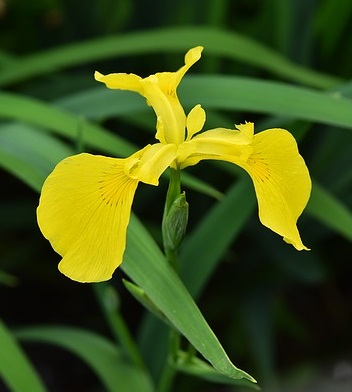
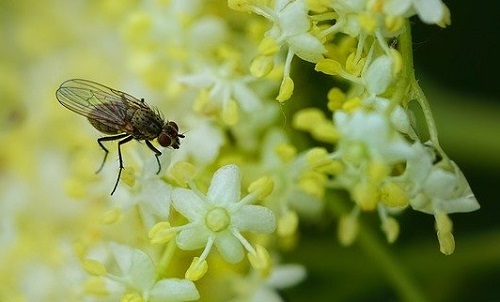
As the weather's warmed, baby spiders have been hatching - the spiderlings running up to the top of a tall plant, spinning a few threads of silk and ballooning away, literally to pastures new. And right on cue, the Mayflies emerged with the blooming of the Mayflower (Hawthorn) and in their precious few hours of life on this earth started to perform their spectacular 'dance' rising and falling, fluttering glittering wings and delicate tail-streams to attract females to mate with in mid-air.
I spotted a stunning female Beautiful Damoiselle with an emerald blue body and translucent lustrous bronze-veined wings near the stream behind Crosby Farm and then the azure blue body of a nearby male before they both disappeared in the foliage. I wondered if she was entering his territory as he would then also be wooing her with a dance - this one involving him curling up his abdomen to flash the bright underside of the last three segments, known as his 'lantern' before taking her on a tour of his chosen nursery site. If she's suitably impressed they'll mate in a heart-shaped embrace.
These jewels haven't been the only thing to catch the eye. Caterpillars have been catapulting down from various trees for weeks, suspended on gossamer threads in the sun-dappled light until one particularly hot day when the clouds hang like furrows, motionless, in suspended rows amongst the duck egg blue. The acid green beech leaves edged with translucent hairs had long-since flung down their russet gold leaf buds to form paths of bronze on the woodland earth but one looked like it had fallen late and was caught in a cobweb. Then, as all around me in different sizes, colours and shapes, little wrigglers parachuted in, I stood transfixed as a stick, I thought was part of an oak tree, suddenly jerked and jiggled and I discovered it was a 'twig caterpillar' an incredible, mind-blowing disguise complete with realistic 'knobbles' and tree markings!
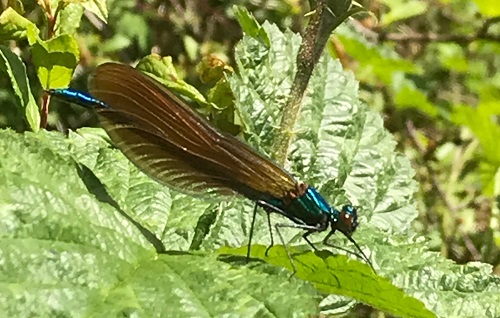
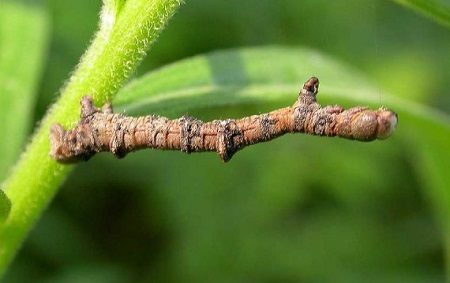
Insect characteristics are so remarkable. This month I'm also going to be looking out for the 'deer antler' like mandibles of the adult male Stag Beetle which they'll probably be waving as they emerge into daylight for the first time in around 6 years, from their larval tunnels in old trees and rotting wood. Look upwards on our warmest evenings and you may see these largest of our land beetles (measuring up to 7.5cms) on the wing looking for a mate. They impress them with their antler-like jaws, which they also use to fight off any rivals. Otherwise you may see them during the day, for the few weeks that they live, sunning themselves. They're attracted to the warm surface of tarmac and pavements and I saw one last year on Clapgate Lane. Whilst rare elsewhere in the UK we're lucky to have them around us here in the South East. Did you know that worldwide there are more beetle species than any other group of insects with still more being discovered?
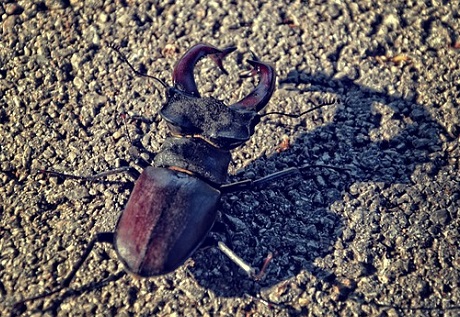
It's not all good news though. Whilst freshwater insects have been increasing by 11% each decade - following action to clean up polluted rivers, an extensive global survey (published in April 2020), shocked scientists when it revealed insect numbers overall are down 25% since 1990!
I continue to be so intrigued and inspired by all those we're so blessed to share our planet with - especially the small ones that we tend to overlook. There's beauty that's big and bold and blatant but let's be mindful of all that's tiny, winged, long-legged or wriggly. Nature opens windows of wonder to us daily, but it's up to us to notice them and keep looking deeper through ...
Notes taken from my 'Country Diary' for Slinfold, West Sussex